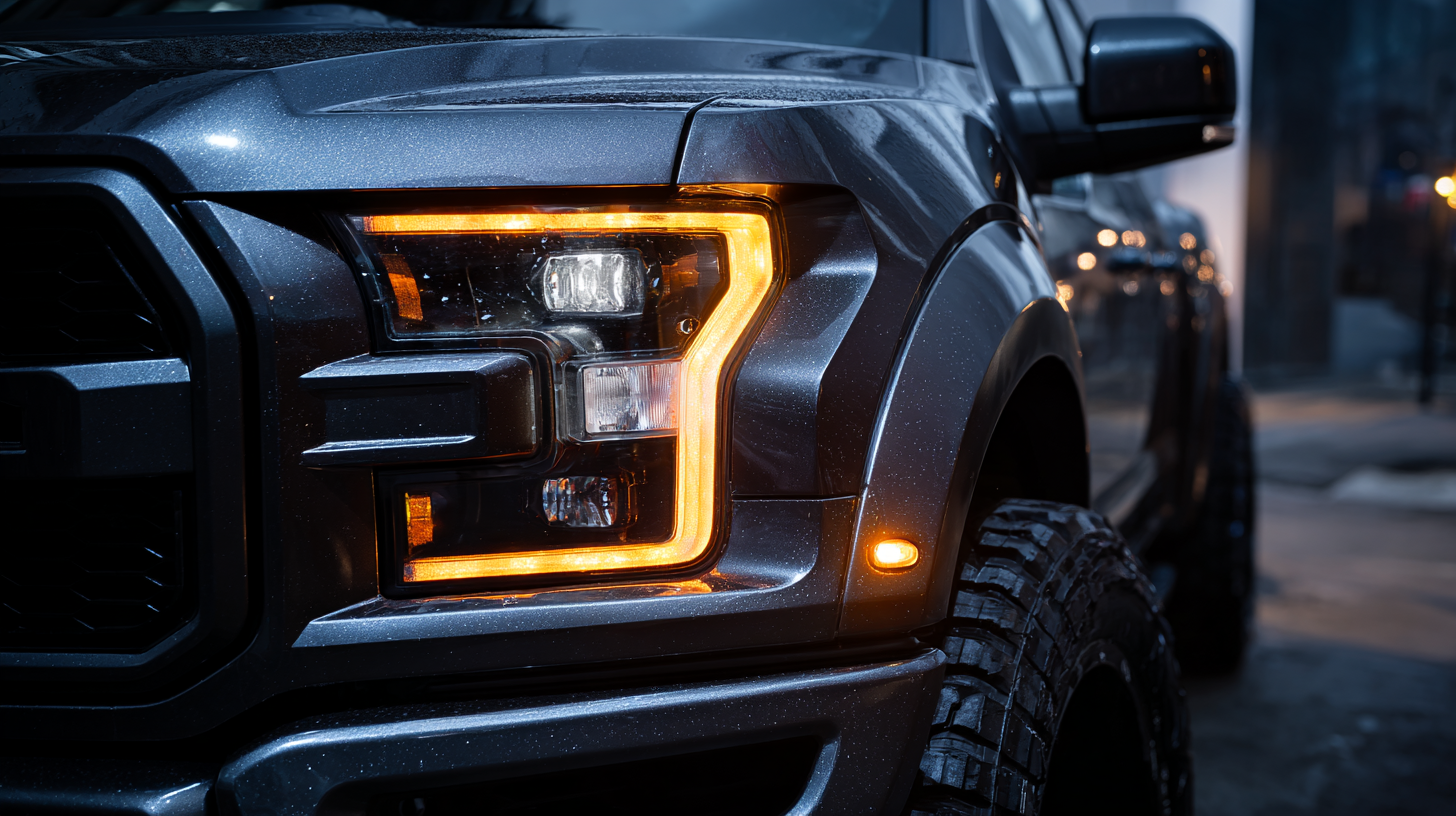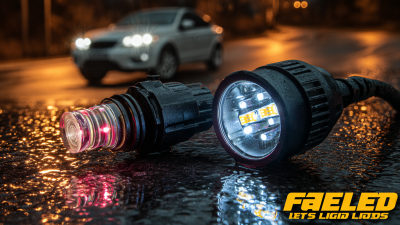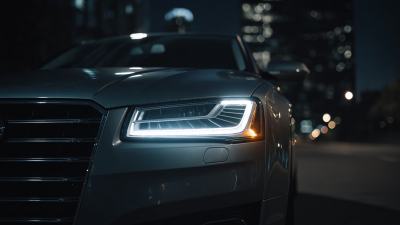In the ever-evolving automotive industry, the demand for effective and energy-efficient lighting solutions is more critical than ever. According to a report by Grand View Research, the global automotive LED lights market is projected to reach USD 9.36 billion by 2025, reflecting a compound annual growth rate (CAGR) of 21.3%. This surge is primarily driven by the increasing emphasis on safety and energy conservation, as Automotive LED Lights not only enhance visibility but also consume significantly less power compared to traditional halogen or incandescent options. With advancements in technology, consumers now have a plethora of choices, making it essential to choose the right lighting to suit individual needs. In this ultimate guide, we will explore the various types of Automotive LED Lights, their benefits, and the key factors to consider when selecting the perfect lighting for your vehicle.

When selecting automotive LED lights for your vehicle, it’s essential to understand the various types available and their specific functions. LED lights are gaining popularity due to their energy efficiency and versatility. Common types include headlights, taillights, fog lights, and turn signals. Each type serves a distinct purpose, from illuminating the road ahead to enhancing visibility and safety during adverse weather conditions.
**Tips**: Consider what type of driving you do most often. If you frequently drive in foggy conditions, investing in high-quality fog lights will significantly improve your visibility. Additionally, ensure that the LED lights you choose are compatible with your vehicle's make and model to avoid electrical issues.
Furthermore, pay attention to brightness levels and color temperatures. LEDs come in various lumens ratings, which indicate their brightness. Cooler color temperatures (around 6000K) provide a daylight effect that can enhance visibility at night. **Tip**: Look for products that offer adjustable brightness settings for added flexibility depending on your driving environment.
When choosing the right automotive LED lights for your vehicle, there are several key factors to consider. One of the most crucial aspects is the brightness and efficiency of the LED lights. With the global LED driver IC market projected to grow from $22.15 billion in 2024 to $43.39 billion by 2032, at a compound annual growth rate of 8.8%, investing in high-quality LED lights can significantly enhance your driving experience. Efficient lighting not only improves visibility but also increases safety, especially in nighttime conditions.
Another important consideration is the design and compatibility of the LED lights with your vehicle. As the automotive market becomes more competitive, particularly in the segment of vehicles priced around $10,000, aesthetic appeal has never been more critical. Consumers are increasingly drawn to unique and stylish designs, leading to the introduction of innovative lighting solutions. Furthermore, with recent studies highlighting issues related to glare from modern LED headlights, it's essential to opt for lights that provide optimal illumination without compromising safety. Selecting the right LED lights can greatly influence both functionality and the overall aesthetic of your vehicle.
| Factor | Description | Recommended Specifications |
|---|---|---|
| Brightness | Measured in lumens, it indicates how much light output the LED light provides. | At least 1000 lumens for headlights, 300 for tail lights. |
| Color Temperature | Describes the color appearance of the light, measured in Kelvin (K). | 6000K for daytime running lights, 3000K for warm white. |
| Lifespan | The expected operational lifetime of the LED light. | Typically 30,000 to 50,000 hours. |
| Energy Efficiency | How much light is produced for the amount of power consumed. | Look for lights with high lumens-per-watt ratio. |
| Heat Management | The ability of the light to dissipate heat, affecting performance and longevity. | LEDs with built-in heat sinks are preferable. |
| Compatibility | Ensures that the LED lights fit and work properly with your vehicle. | Check for sizes and socket types compatible with the vehicle. |
When selecting automotive LED lights for your vehicle, understanding the nuances of brightness, color temperature, and beam patterns is crucial. Brightness is primarily determined by the lumens produced by the LED bulb; higher lumens equate to stronger light output, which is essential for visibility, especially in low-light conditions. However, it’s important to consider that increased brightness can lead to issues such as blinding oncoming drivers if the lights are not correctly installed or aligned.
Color temperature, measured in Kelvin (K), affects the light's appearance and effectiveness. Lower temperatures (around 3000K) emit a warm yellow light, which is less harsh on the eyes and can enhance visibility in foggy conditions. In contrast, higher temperatures (above 6000K) produce a cooler, bluish light that can appear brighter but may create glare. Beam patterns also play a significant role in how light is distributed on the road. A well-designed beam pattern ensures that light is directed where needed without causing excess scattering, which can create hazardous driving conditions. Therefore, choosing LED lights involves evaluating these factors to optimize both performance and safety for your driving experience.
This chart compares the brightness (measured in lumens), color temperature (measured in Kelvin), and beam patterns (spot vs. flood) for different types of automotive LED lights commonly used in vehicles.
When it comes to installing automotive LED lights, proper techniques are crucial to ensure safety and optimal functionality. According to a report from the Automotive Lighting Market Analysis, the global LED lighting market in the automotive sector is projected to reach over $30 billion by 2026, with the demand for efficient, long-lasting lights driving innovation. To begin your installation process, ensure that you have the correct tools, including wire strippers, crimp connectors, and a heat gun. Before installation, consult your vehicle’s manual for specific wiring diagrams, as improper connections can lead to circuit failures.
One of the most effective methods for installing your new LED lights is using a relay harness, which helps to reduce the load on your vehicle’s electrical system. A study from the Specialty Equipment Market Association highlights that proper wiring techniques can enhance the longevity of automotive lighting systems. Additionally, consider using silicone sealants to protect connections from moisture and dirt, extending the lifespan of your lights. Following these techniques can not only enhance the aesthetic appeal of your vehicle but also ensure your safety on the road by providing superior illumination.

Maintaining and troubleshooting automotive LED lights is crucial for ensuring their longevity and performance. Regular inspection of your LED lights can help identify any issues before they become significant problems. For instance, check for signs of moisture in the housing, which can lead to corrosion. Keep the lenses clean and free from dirt and debris, as this can affect brightness and visibility.
Tips: Consider using a microfiber cloth to gently clean the LED lenses; avoid abrasive materials that could scratch the surface. Additionally, investing in quality LED bulbs from reputable brands can prevent frequent replacements and save you money in the long run.
When it comes to troubleshooting, if you notice flickering or dimming lights, it may indicate a poor connection or a failing LED. Inspect the wiring and connectors for any signs of wear or damage. If you are comfortable, reseating or replacing faulty connections can often resolve these issues.
Tips: Always disconnect the battery before attempting any repairs to avoid electrical shock. If the problem persists, consulting a professional may be the best course of action to ensure your vehicle remains safe and well-lit.







